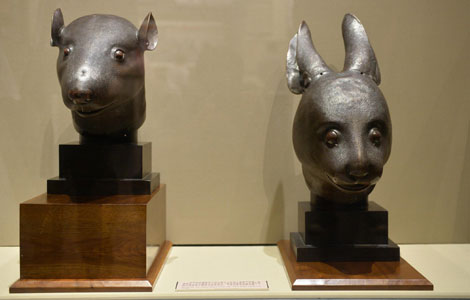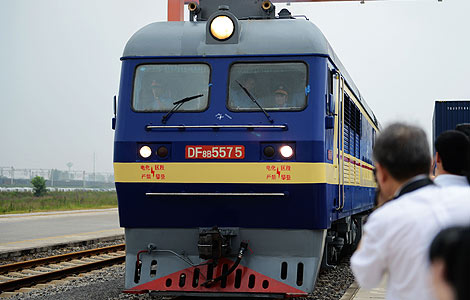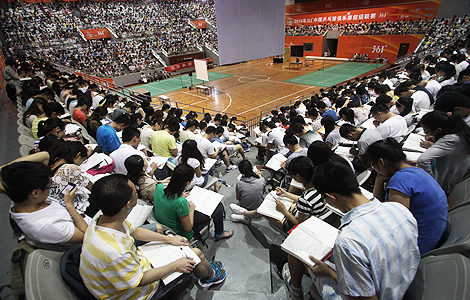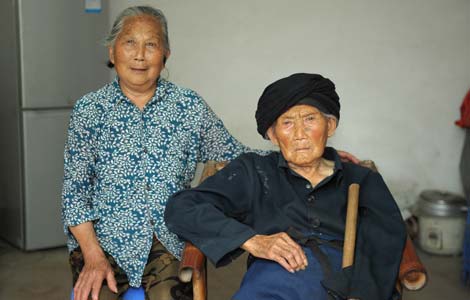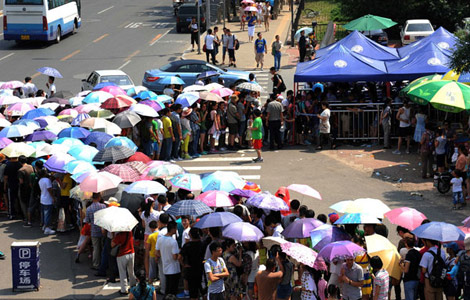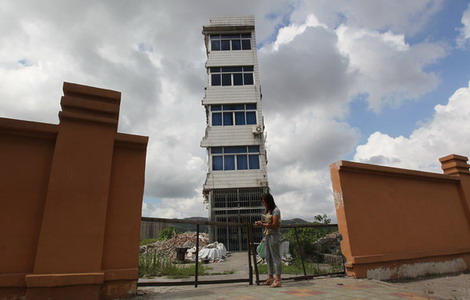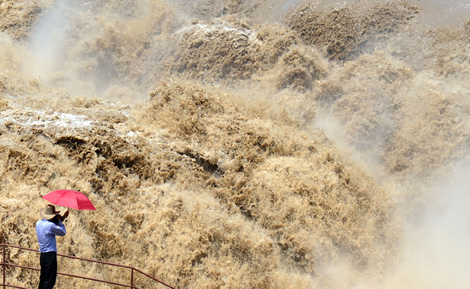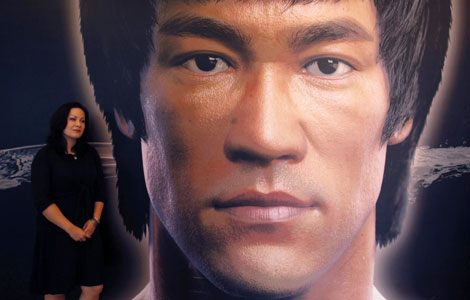

|
|
The experiences of three of China's foreign aid experts show how difficult yet rewarding this can be. Peng Yining, Cao Li and Wang Yan report.
China has provided aid to more than 160 countries in Africa, Asia, Latin America and in the South Pacific since 1950.
The nearly 2,000 aid projects include agriculture, construction, transport, medical care and education, according to figures from the Ministry of Commerce.
In addition to the money and materials that have been sent to these countries and regions, China has also provided foreign aid experts, among them a doctor, a rice expert and an engineer.
Rice to feed the world
|
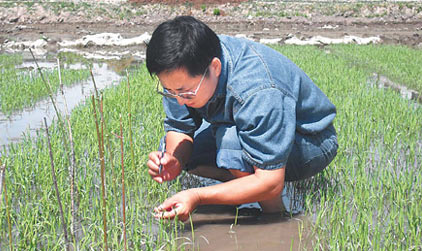 Huang Dahui works in a paddy field in Uzbekistan. [Provided for China Daily] |
The 45-year-old professor is the chief training officer with the China-aid Hybrid Rice Technology Training Center, based in Changsha, capital of Hunan province.
Hybrid rice is produced by crossbreeding different varieties of rice and much of the research was originally done in the 1970s by the man known as the "Father of Hybrid Rice" Yuan Longping.
His work in China helped significantly increase rice output and allowed 20 percent of the world's population to feed itself with just 7 percent of the world's farmland.
Huang, a former student of Yuan, has helped people in eight countries breed China's hybrid rice since 1996.
"Our goal is to eliminate hunger on Earth," Huang said in his simple office before giving a lecture to students from Asia, Africa and Latin America.
"Students don't need to pay anything and get a daily subsidy for meals and lodging. Lessons are offered in English, French and Portuguese," Huang said.
Teaching is all very well, but fieldwork, literally, is most important, said Huang, who taught hybrid rice seed selection in the United States from 1996 to 1999. Since then he has worked in Sri Lanka, Vietnam, Thailand, Liberia, Uzbekistan and India.
"Over the past 15 years a quarter of that time has been spent in foreign lands," Huang said.
More than 120 countries currently grow rice, and about 50 of them have introduced Chinese hybrid rice, Huang said.
"If rice-growing countries planted 50 percent more hybrid rice, food would not be scarce," he said.
Converting these countries to his cause is not an easy task, however, and working in mainly tropical countries means he has had to contend with high temperatures, up to 47 C in India.
Another difficulty is staying healthy. During Huang's stay in Sri Lanka there was dengue fever and he was the only one to stay and complete the training plan.
Long working hours and irregular meals are another facet of his work.
"In Indonesia, we had to wake up at around 6 am and have breakfast at 7. The next meal would be at 4 pm. We were often hungry," he said.
Huang's reward is when his international students pay their respects. He is also grateful that his wife has been supportive. He said his first marriage failed because he was away from home so often.
"I'm glad that I have been involved in foreign aid. It's a meaningful job with a great sense of achievement and I would do it again given the chance."
Medical care in Guinea
|
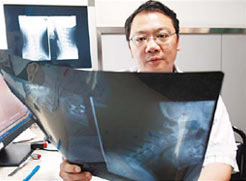 Wang Fei, a doctor at Beijing Tongren Hospital spent two years in Guinea. [Provided for China Daily] |
When Wang Fei and his medical team arrived in Guinea, in 2000, locals warned them not to hang their clothes outdoors because there was an insect that laid eggs in them and the larvae would creep beneath the skin and suck the fat.
"Many people suffered from this disease, myiasis, including one of our team members," said the 48-year-old orthopedic doctor from Beijing Tongren Hospital. "We had to cut the patient's skin and use tweezers to get the larvae out."
Wang and 13 of his medical colleagues spent two years in the African country after being sent by the Ministry of Health as part of China's foreign aid commitments to the country, which were first established in 1964.
Eleven medical personnel worked in the Center Hospital-University Ignace Deen, in the capital city of Conakry. The remaining three personnel went to a medical-care station in the northern city of Lab.
Since 1963, China has sent more than 20,000 medical staff to 65 countries and regions in Asia, Africa and Latin America. Currently, there are more than 48 medical teams, comprising 1,200 people, working in 47 countries, according to the Ministry of Commerce's Department of Aid to Foreign Countries.
Wang said the buildings and health conditions were so poor in Guinea they reminded him of China in the 1970s.
Malaria, cholera and yellow fever were rife. Wang said everyone in Guinea had or would contract malaria.
"When our families called we had to tell them everything was alright, to ease their anxieties, even though we were trying to cope with malaria fever ourselves."
He said that if someone was in poor health the medical conditions of Africa would make them worse.
"Some of the diseases are rare but can be treated in China. In Guinea they are often fatal," Wang said.
There are mosquitoes everywhere, Wang said, and he counted 60 on his mosquito net in the morning after his first night.
There is also a kind of acid ant that burns people's skin when it is crushed.
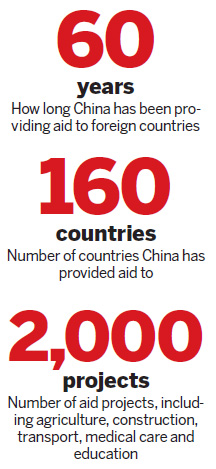 "We were warned not to squash them when they were on our skin, but the advice came too late," said nurse Chen Hong, also from Beijing Tongren Hospital, who had burns to her neck and shoulders.
"We were warned not to squash them when they were on our skin, but the advice came too late," said nurse Chen Hong, also from Beijing Tongren Hospital, who had burns to her neck and shoulders.
She also had neurodermatitis, a skin disorder that she said was partly caused by work pressure.
"We were kept on standby for 24 hours a day, seven days a week," she said, pointing to the wounds on her hands caused by the disease.
She said they were paid $800 a month, which was two to three times higher than the then average salary in China.
"We had a single room in a dormitory and had a Chinese cook. Life was basically safe and comfortable, but work was exhausting," said Chen who is in her 40s.
Wang said he treated at least 50 patients a day, providing free medical care, medicine and surgery. Patients included local and Chinese officials and businessmen.
Most of the patients, however, were locals, who generally earned a living by fishing and farming. Many of them were illiterate and didn't know much about basic hygiene.
"The hospital didn't have adequate disinfection measures. Many patients died after surgery because of infection."
Wang taught the local doctors about such matters and how they could protect themselves from being infected by their patients' diseases, he said.
The tour of duty for all medical staff was two years and during that time the only contact they had with their families was by phone, letter or the Internet.
Phone calls were expensive and letters took more than a week to reach China. They didn't have Internet access and had to ask at company offices to send an e-mail.
He said foreign aid medical staff can now apply for home visits every 11 months, but have to pay their own transport costs.
Wang said the hardest part of his foreign adventure was leaving his son, who was one-and-a-half-years old when he left China.
"When I returned he was four and didn't recognize me."
Building a legacy
|
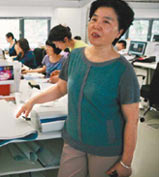 Feng Yanlin, an engineer with the Beijing Institute of Architectural Design, helped design the Tunis Youth Center for Sports and Culture, in 1985.[Feng Yongbin / China Daily] |
Feng Yanlin, an engineer with the Beijing Institute of Architectural Design, helped design the Tunis Youth Center for Sports and Culture, in 1985.
She was 30 at the time and is proud of the fact that "it is still the most beautiful and frequently used building in Tunis".
The building was designed by Liu Li and has an Arabian-style dome and earth-yellow walls that fit in well with the surroundings, with a 500-seat theater and swimming pool. It was finished in 1990, cost 15.3 million yuan ($2.3 million) and was opened by the country's president.
"Although some of the facilities have worn out, it is still popular among children and after 25 years it is still the only venue of its type in the city."
Feng's colleague, Yang Min, recalled the happy scenes she witnessed two years ago.
"It is so fulfilling to see so many happy kids in a China-made building. I love children and I was so excited to see it."
Parents send their children to the center every afternoon in the week, on weekends and on holidays, where they learn painting, gymnastics and taekwondo.
"There were two volunteers from Jiangxi province teaching Chinese martial arts and gymnastics," Yang said.
The refurbishments to the flooring, air conditioning and the purchase of computers will cost approximately 20 million yuan ($3 million), Feng said.
"We have transported most of the building materials and facilities from China, to lower costs and ensure quality. At the same time, it is a way to promote China-made products."
Feng and her team is awaiting confirmation from Ministry of Commerce to complete their renovations.
Her team has also worked on other aid projects, including a hospital in Peru.
|
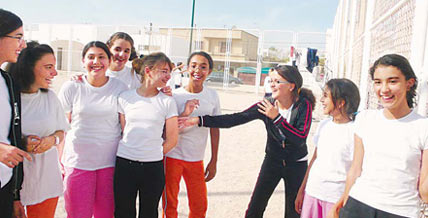 Tunisian children at the youth center. [Zhang Wei / China Daily] |
